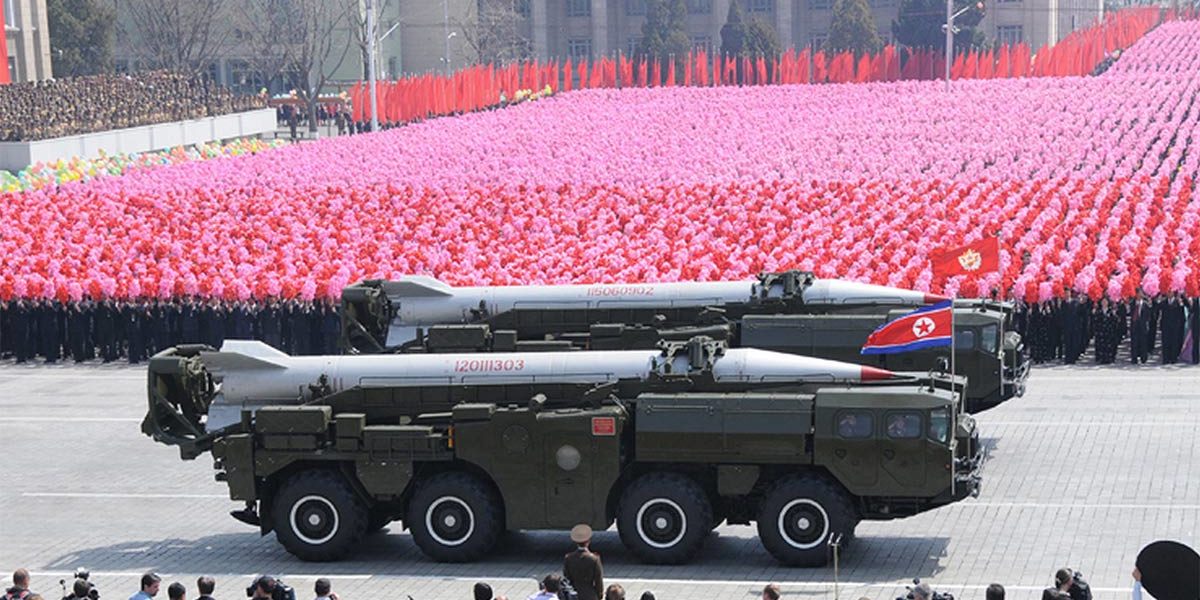Facts
| Designation | Hwasong-6 (Scud-C Variant) |
| Missile Variants | Scud-C (Russia), Hwasong-5, Hwasong-7, Shahab-2 (Iran) |
| Mobility | Road Mobile/ Short Range Ballistic Missile |
| Designer/Producer | Soviet Union/North Korea |
| Range | 500 km |
| Warhead Type and Weight | Conventional or Chemical/770KG |
| MIRV and Yield | No MIRV capability / N/A |
| Guidance System/ Accuracy | Modeled after V4/A2 Arrangement/1000 meters CEP |
| Stages Propellant | One/Liquid |
| IOC | 1989 |
| Status/Number of Units | Operational/500 missiles |
Development
The Hwasong-6, the North Korean variant of the Russian “Scud-C”, is a road-mobile, liquid fueled, short-range ballistic missile. [1] The Hwasong-6 achieved a substantial range increase over the “Scud-B” variant Hwasong-5 by decreasing the weight of warhead to 770kg and extending the length of the rocket body. [2] The Hwasong-6 has a range of 500 km (310 miles) from its single-stage liquid propellant engine. [3] The warhead can be chemical, HE, or sub-munitions. Since the North Koreans did not upgrade the missile guidance system, the Hwasong-6 is only accurate within 1 kilometer (1,000 m CEP). [4]
After a successful launch in 1991, North Korea began to produce the Hwasong-6 in 1992. Between the late 1980’s and early 1990’s, North Korea was producing an estimated 50 to 100 missiles per year. [5]
Similar to previous models, the Hwasong-6 has been proliferated to several countries. Approximately 400 Hwasong-6 missiles may have been exported to Egypt, Iran, Cuba, Iraq, Syria, Libya, Yemen, and Vietnam from North Korea. It cannot be confirmed that Iraq, Cuba, or Egypt received these missiles from North Korea. [6] Furthermore, Libya, Iran, and Syria have set up production lines of their own making it difficult to distinguish between systems that were domestically produced and imported versions. [7]However, in North Korea, the missile is likely out of production.
Strategic Implications
The Hwasong-6 poses a threat to North Korea’s closest neighbors, mainly South Korea. The entire southern half of the Korean peninsula is within range of the Hwasong-6. [8] The Hwasong-6 is road-mobile, which increases resiliency against preemptive counterforce and it is able to be deployed from any location. [9]
Missile Tests
Click here to see a list of the Hwasong-6 tests.
Sources
[1] “‘Scud C’ Variant (Hwasong 6)”, Missile Threat (October 26, 2012): 1, accessed June 11, 2014,http://missilethreat.com/missiles/scud-c-variant-hwasong-6/?country=north-korea#north-korea .
[2] “Hwasong 6 / Scud-c,” North Korean Missiles, May 12, 2014, accessed June 11, 2014,http://www.fas.org/nuke/guide/dprk/missile/hwasong-6.htm .
[3] “‘Scud C’ Variant (Hwasong 6)”, Missile Threat (October 26, 2012): 1, accessed June 11, 2014,http://missilethreat.com/missiles/scud-c-variant-hwasong-6/?country=north-korea#north-korea .
[4] “NCNK Issue Brief,” An Overview of North Korea’s Ballistic Missiles, accessed June 11, 2014,http://www.eai.or.kr/data/databank/2010051314575322.pdf .
[5] “‘Scud C’ Variant (Hwasong 6)”, Missile Threat (October 26, 2012): 1, accessed June 11, 2014,http://missilethreat.com/missiles/scud-c-variant-hwasong-6/?country=north-korea#north-korea
[6] “‘Scud C’ Variant (Hwasong 6)”, Missile Threat (October 26, 2012): 1, accessed June 11, 2014,http://missilethreat.com/missiles/scud-c-variant-hwasong-6/?country=north-korea#north-korea .
[7] “NCNK Issue Brief,” An Overview of North Korea’s Ballistic Missiles, accessed June 11, 2014,http://www.eai.or.kr/data/databank/2010051314575322.pdf .
[8] Ibid
[9] Ibid

